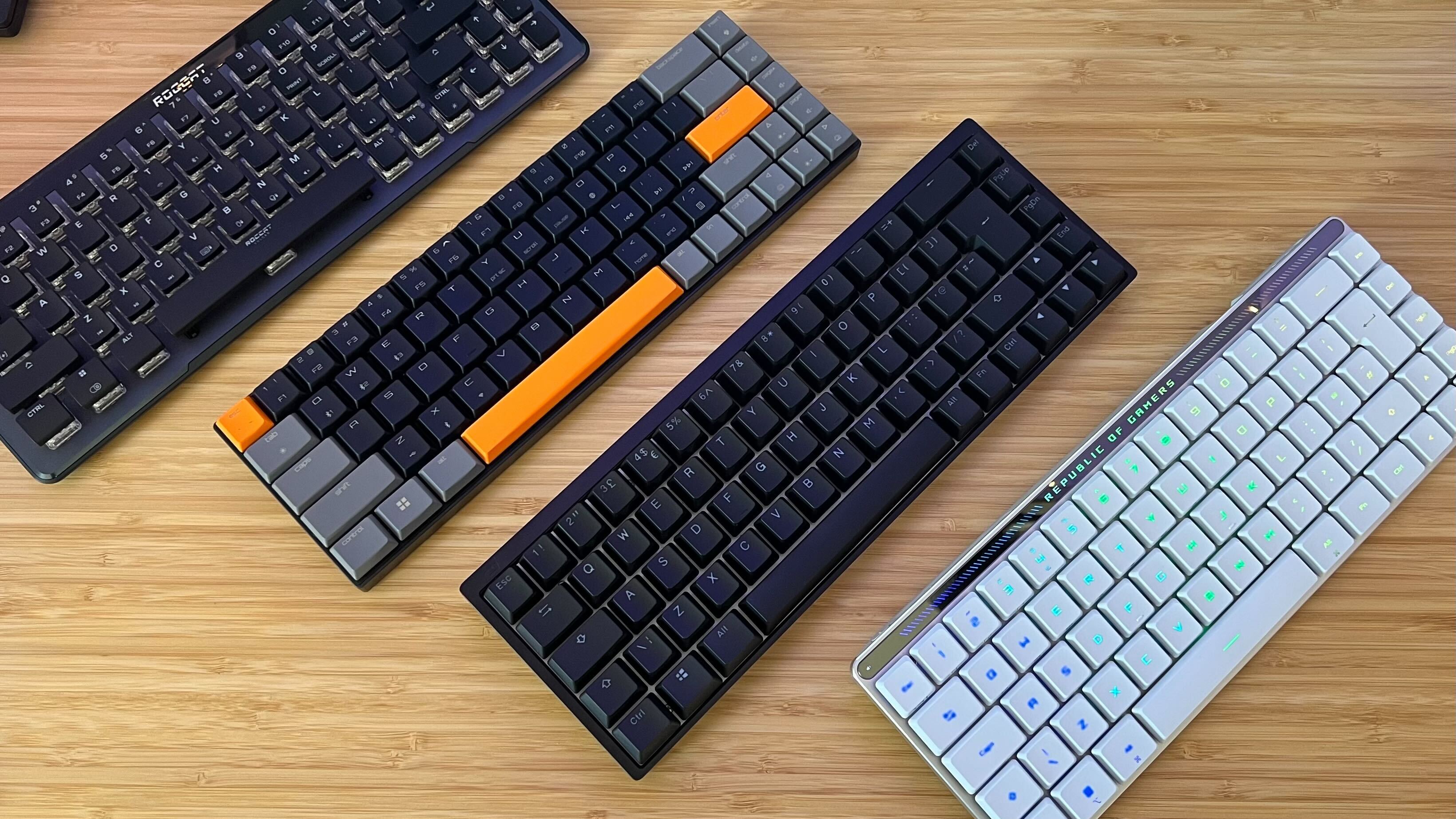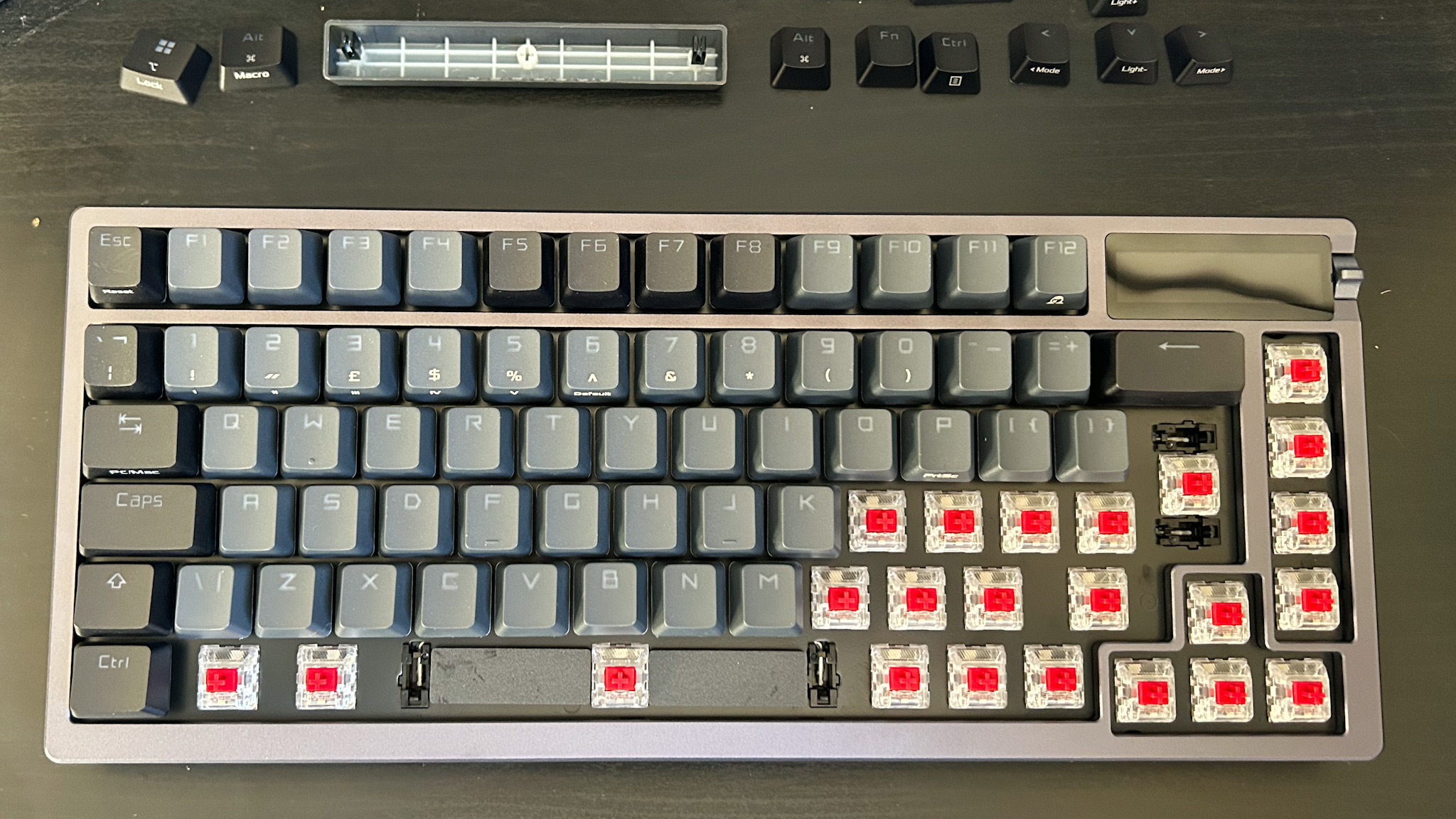What is a gaming keyboard’s polling rate? (And why you probably don’t need an 8K deck)
Keyboard polling explained

Before Razer and Logitech brought their 1,000Hz polling keyboards to market in the early 00s, nobody really cared about the internal refresh rate of their kit. Yes, you had the PC specialists poring over early numbers, but everyday gamers never really had to balance features and specs in the same way we do when comparing the best gaming keyboards today. Now we have brands claiming their decks run at ‘8x’ the speed of previous models, citing polling rates as the measurements behind these claims. But what exactly is this jargon, and is it worth prioritizing or simply another marketing buzzword?
What is a polling rate?
Simply put, your keyboard’s polling rate is the speed at which your device sends information to your computer. Measured in Hertz (Hz), a 1,000Hz polling rate means that a gaming keyboard will report your keypresses 1,000 times per second. An 8,000Hz polling rate means your keypresses will be reported 8,000 times per second.
In theory, the higher your polling rate, the faster your keyboard will be sending your actions to your PC. In theory. Scan rate is another term that’s often confused with polling but is in itself a separate part of the equation that influences the overall speed of your device. Your keyboard’s scan rate measures how many times the device itself checks for new inputs per second. A 4,000Hz scan rate / 8,000Hz polling rate keyboard will be checking for new inputs 4,000 times per second, and sending any inputs it finds to your PC 8,000 times per second. Latency can still occur despite those ludicrously high speeds, therefore, should your input fall in between the scan rate’s checks or the polling rate’s checks.

That’s why 8,000Hz rates were introduced. They’re not necessarily being used for their additional speed - after all, nobody needs to mash a key 8,000 times per second. Rather, it’s the peace of mind that more checks means less accidents - your inputs are more likely to be picked up straight away rather than having to wait for the next poll or scan.
Should you care?

There’s a big but here. It’s only the very top of the top 1% of players who will actually need an 8KHz polling rate - the esports stars spending their days training their reaction times and pro-action strategies. If you’re a casual player like me, you simply won’t need to buy into this latest fad - it’s simply coming to mainstream markets because gaming keyboard speed has hit a ceiling.
The average human reaction time is around 250ms (I’d recommend using this online test to see truly how little time that is). Esports players can train that time down to 100-120ms, but even highly skilled casual players will cap out at around 180ms - 200ms. In that split second, a 1,000Hz gaming keyboard has reported your inputs 250 times. A 4,000Hz keyboard will report 1,000 times. An 8,000Hz keyboard will report 2,000 times. That’s just not necessary for casual players. Realistically, one press a millisecond out (and that’s only if you get incredibly unlucky) isn’t going to make a difference to your Thursday night Apex Legends session. And that’s before we even dive into the importance of pro-action rather than reaction times in more competitive gameplay.
8,000Hz gaming keyboards are here because brands don’t know where else to take their decks. In a constant bid to innovate annually, we seem to be stuck in a cycle of unnecessary tech being pitched as aspirational, and then the norm a few years later. Don’t get me wrong, I’m all for moving forwards. Gaming keyboards may well all feature 8KHz polling as standard in the future. But right now, when it could be adding to the cost of your next deck, while sacrificing other features you could be making more use of, it’s a little tricky to reconcile.
Sign up to the GamesRadar+ Newsletter
Weekly digests, tales from the communities you love, and more
I’m not against higher polling rates - it’s a very odd hill to die on, after all. But I am against paying for something you won’t want, need, or use. Unless you’re an esports professional you don’t need to worry about your gaming keyboard’s polling rate. Focus instead on the quality of your switches, extra macro or functionality options, and the build design of your keyboard. All these things will make a tangible difference in how your deck runs.
You’ll also find our full guide to the best wireless gaming keyboards if you’re after a cable-free setup, or check out the best hot-swappable keyboards and the best membrane gaming keyboards for more options.

Managing Editor of Hardware at GamesRadar+, I originally landed in hardware at our sister site TechRadar before moving over to GamesRadar. In between, I've written for Tom’s Guide, Wireframe, The Indie Game Website and That Video Game Blog, covering everything from the PS5 launch to the Apple Pencil. Now, i'm focused on Nintendo Switch, gaming laptops (and the keyboards, headsets and mice that come with them), PS5, and trying to find the perfect projector.


